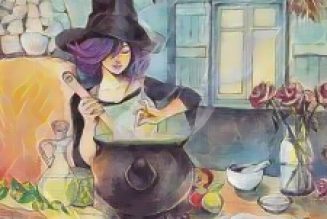The art of making cold-infused oils.
The art of making cold-infused oils is a gentle, time-honored tradition that allows you to preserve the subtle qualities of your favorite herbs, plants, or flowers. You might like to begin by choosing the freshest botanicals you can find—many people prefer to harvest them in the morning, once the dew has dried, as this is when their essential oils are thought to be most vibrant. It’s helpful to make sure your herbs are clean and dry, since any lingering moisture could encourage spoilage or mold during the infusion.
If you wish, you can use a very clean, dry, and ideally sterilized glass jar. Many find that dark glass—like blue, green, or brown—helps protect the oil from light, which can affect its quality over time. You might gently fill the jar about two-thirds full with your chosen herbs or flowers, taking care not to crush them, as this can sometimes cause cloudiness or extra sediment in your finished oil.
When you’re ready, consider slowly pouring your favorite carrier oil—perhaps olive, sunflower, or sweet almond—over the herbs until they’re fully submerged. Pouring slowly can help minimize air bubbles, and letting the oil settle for a few minutes is often helpful. If you notice the herbs floating above the oil, you can always add a bit more to keep everything covered. This step can be important, as exposed plant material may spoil.
Once your jar is filled, you might want to screw the lid on gently, leaving it a little loose so a bit of airflow can help prevent condensation. Many people like to store their infusion in a cool, dark place—such as a cupboard or pantry—away from direct sunlight and heat.
Each day, you could check on your infusion, perhaps giving the jar a gentle swirl or turning it upside down to keep the herbs coated in oil. This daily ritual can also be a lovely moment to focus your intentions—if you wish, you might recite a spell, affirmation, or incantation as you agitate the jar, infusing your oil with your own energy and purpose.
After about a week, you may want to check the scent and color of your oil. If the aroma is still faint, you might choose to strain out the old herbs and add a fresh batch, repeating the process. Many people continue this cycle for at least three weeks, or until the oil reaches a strength and fragrance that feels right to them.
When you feel your oil is ready, you can strain it using a fine mesh strainer, cheesecloth, or a colander—whatever you have on hand. For extra potency, you might gently squeeze the strained herbs to release any remaining oil back into your jar, making sure to capture every drop of the infused essence.
You may wish to transfer your finished oil into a clean, sterilized jar or bottle that’s just the right size, leaving as little air as possible inside. Since exposure to air can hasten spoilage, filling the container to the brim and sealing it tightly is often helpful.
It’s a good idea to label your oils with the type of herb and the date you made them. Storing your finished cold oil in a cool, dark place and using it within six months is often recommended for best results. If you ever notice signs of spoilage—like cloudiness, off smells, or mold—it’s safest to discard the oil.
With patience and care, your cold-infused oils can become a cherished part of your magical or herbal practice, preserving the gentle energies and healing properties of your chosen plants.
























